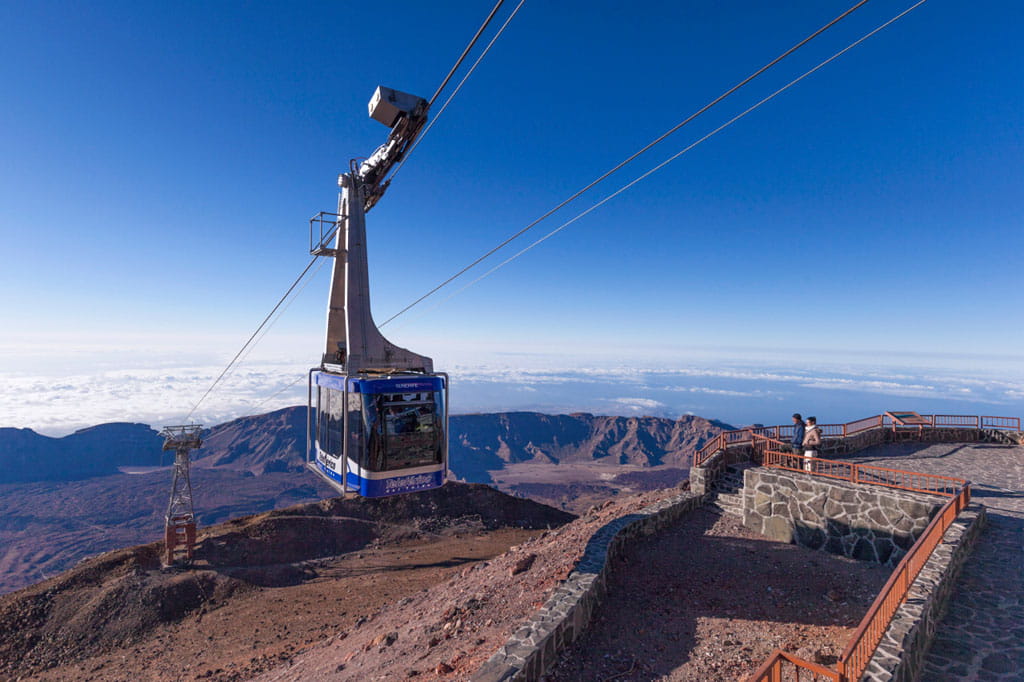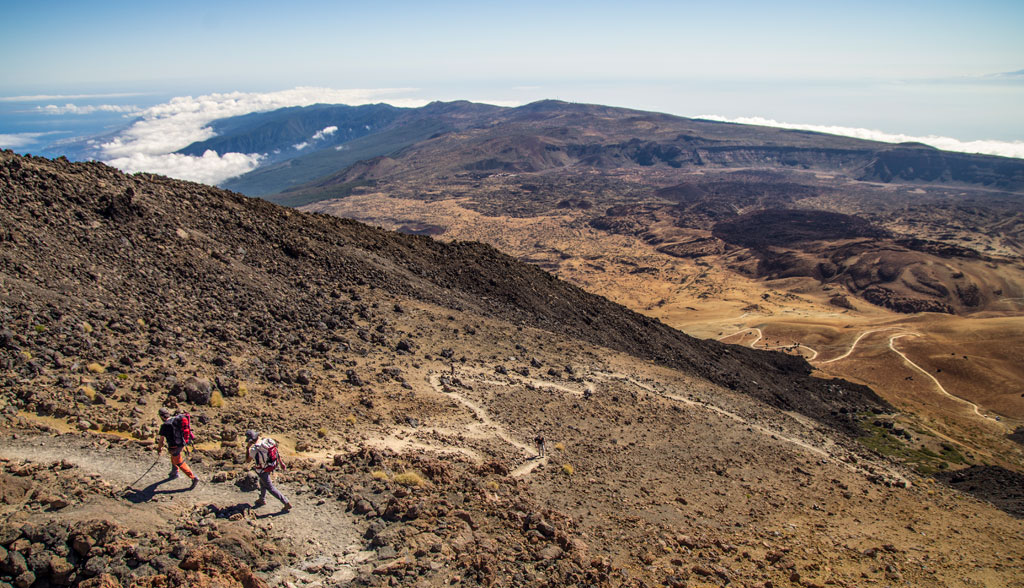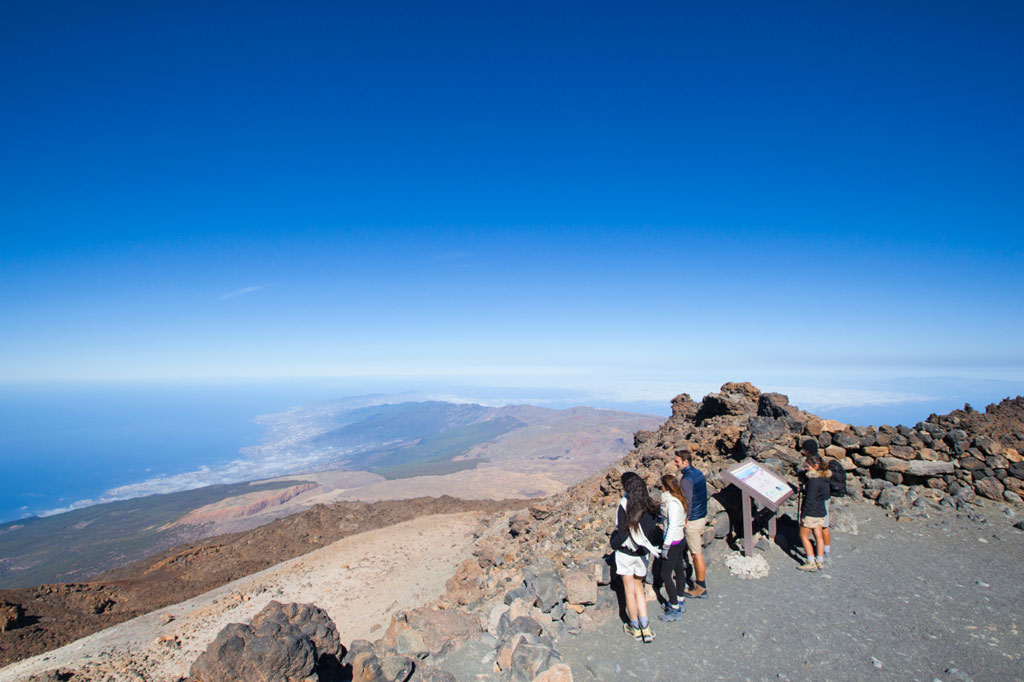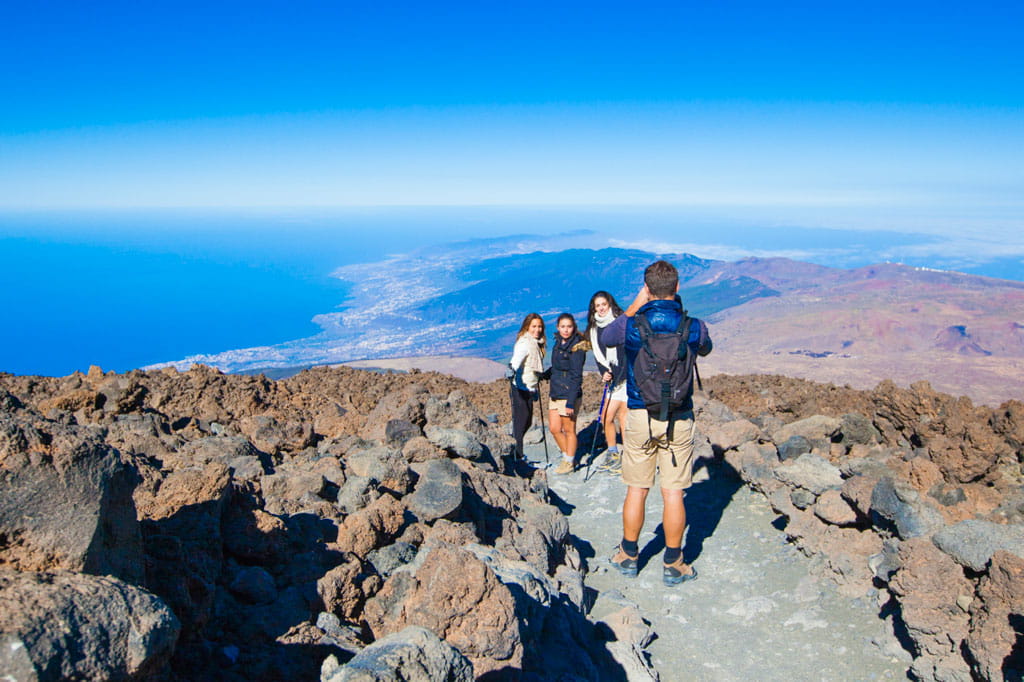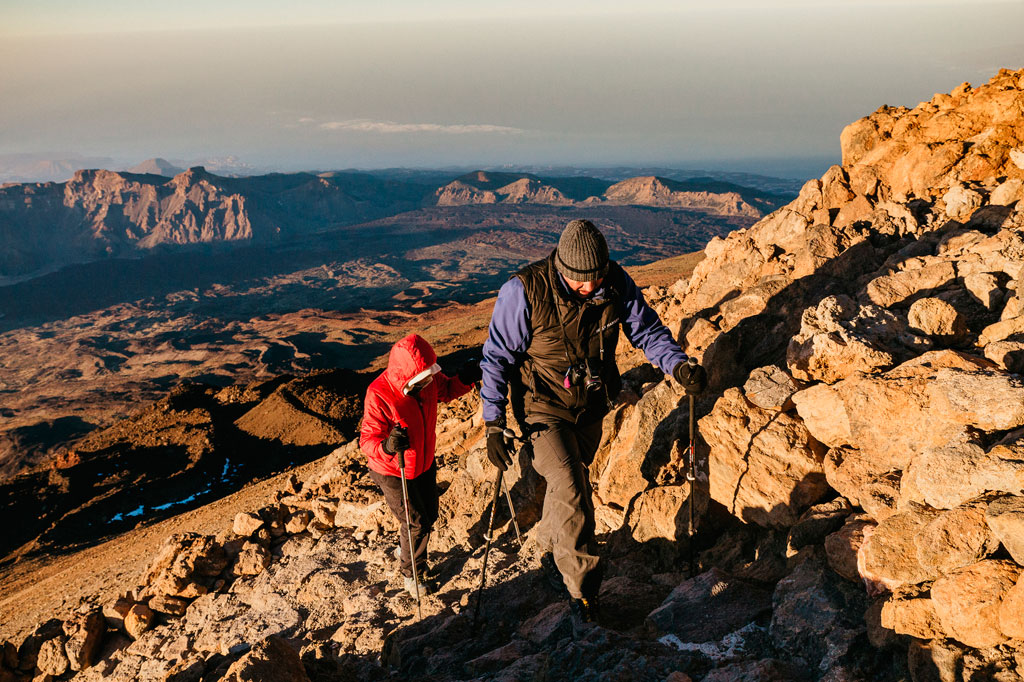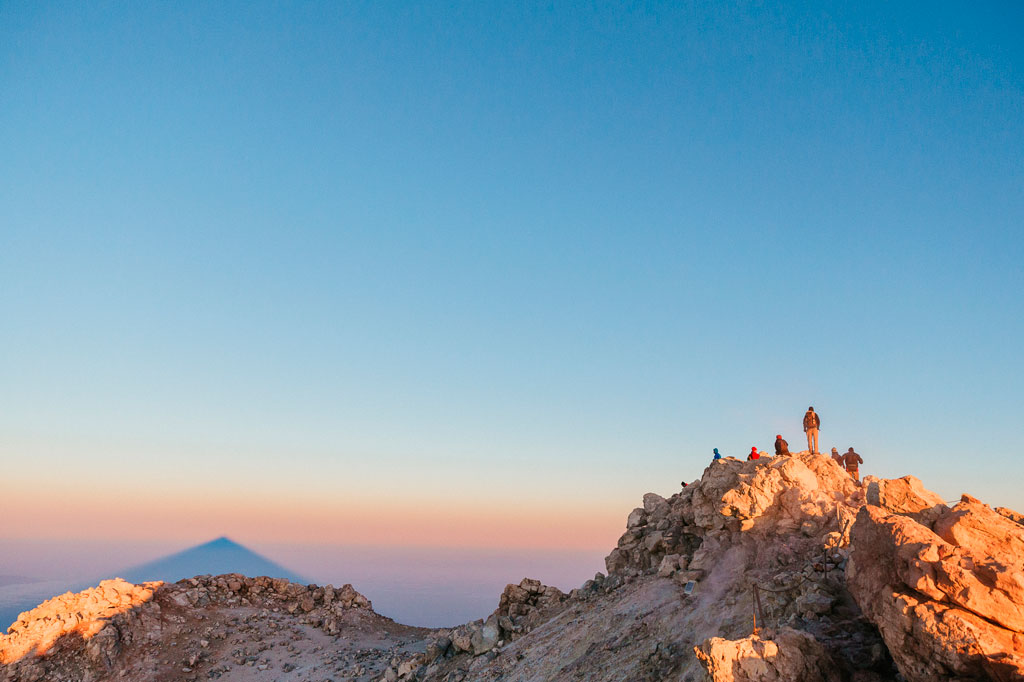- Home
- What to see
- Teide National Park
- Climbing to the summit
Climbing to the summit
Mount Teide National Park
Your breathing is unsteady, not merely because of the physical strain and the altitude... It also has to do with the fact that you can see the peak getting closer and your heart is racing. Funnily enough, the closer you get to the top, the less your legs ache. In fact, there is something of a spring in your step, as if just knowing that you're almost there were pumping fresh energy into your body. Finally, you reach the top. Anyone who looked at you now would see a huge smile of sheer satisfaction on your face: You made it! So how about your reward? Look around you: the legendary view from all the way up there makes you feel like the ruler of the world.
The experience of climbing to the summit of Mount Teide is incomparable, towering 3,718 m (12,198 ft) high – the highest peak in Spain. There are various ways of reaching the top of the volcano. One is to climb all the way on foot along a single trail that sets off from Montaña Blanca by the road, which is a six-hour walk.
Another is to go part of the way up on the cable car, which takes you as far as La Rambleta, 3,555 m (11,663 ft) high. From there, you will have to take the Telesforo Bravo trail up to the summit. It is just a 200 m (656 ft) climb but you will need a special licence (which can only be applied for on the web site www.reservasparquesnacionales.es).
Once at La Rambleta, you can visit the lookout points of La Fortaleza and Pico Viejo, which do not require a licence and afford magnificent views over Tenerife, stretching as far as the other islands in the archipelago.
Those who spend the night at the Refugio de Altavista hut (at a height of 3,250 m – 10,662 ft) can access Teide's summit with a stamped copy of their accommodation receipt on the day, no need for a special licence. The only condition is to have finished walking the trail by 9 a.m.
On your way up the volcano, it is advisable to wear suitable clothing and footwear to protect you from weather changes and enable you to walk on rocky ground. People with cardiovascular conditions or children aged under three are advised not to make the climb.
Multimedia gallery
